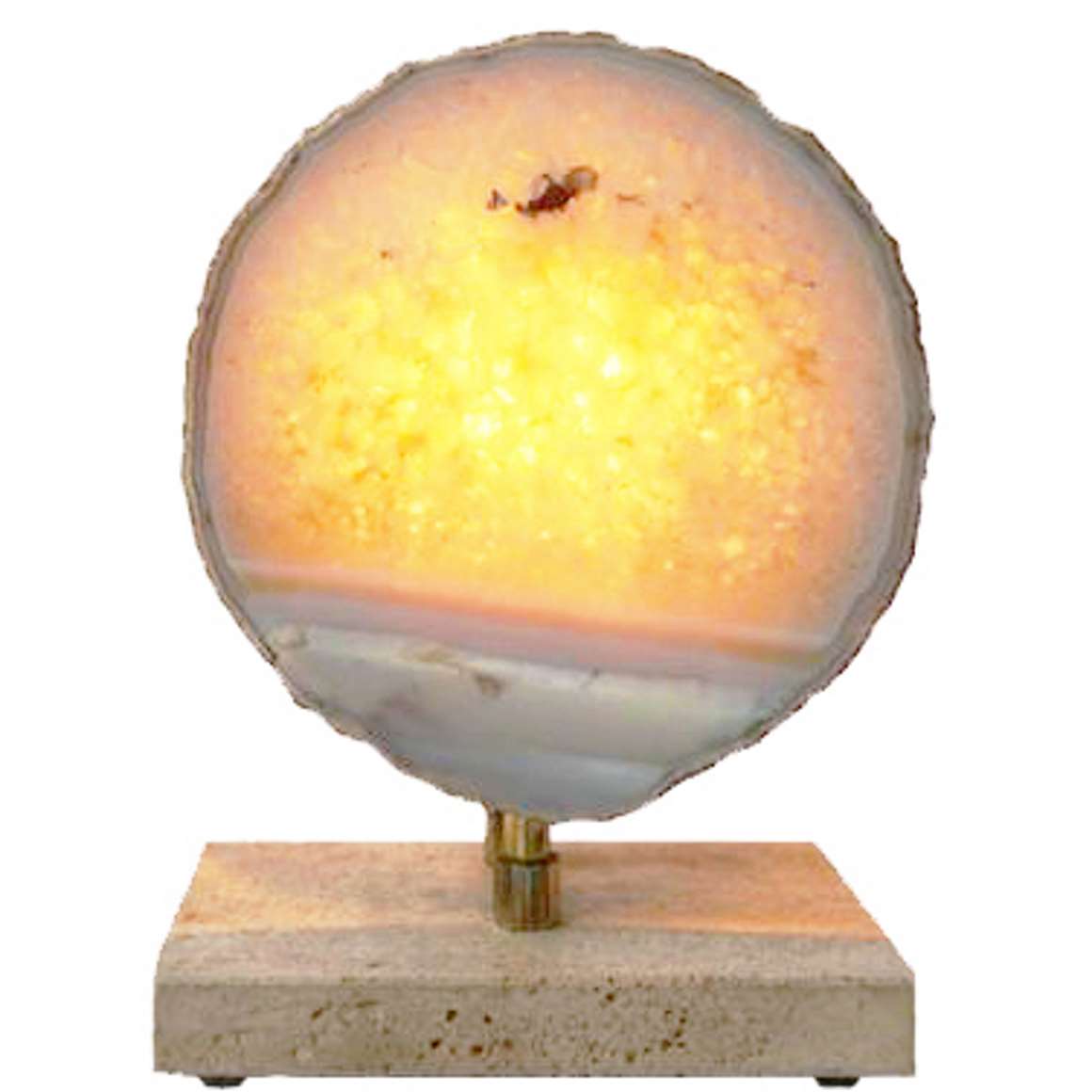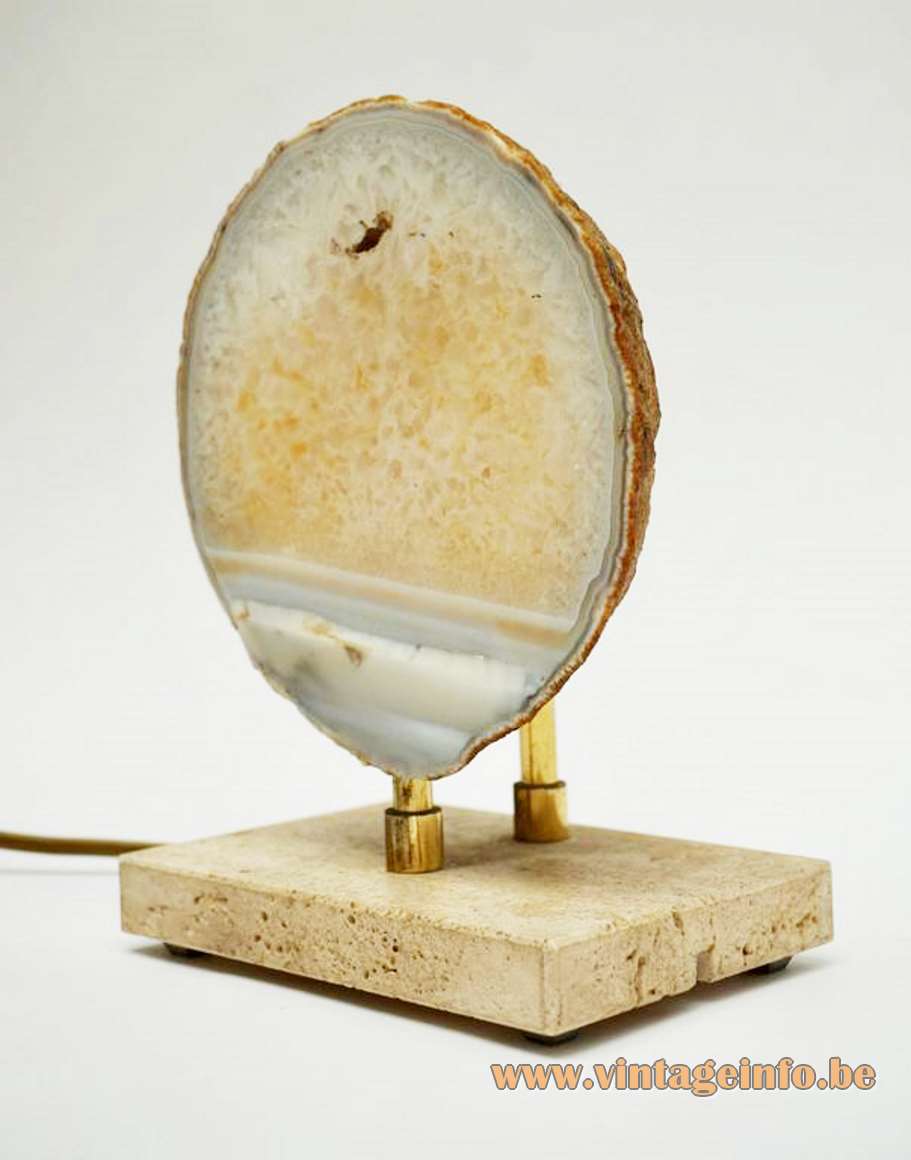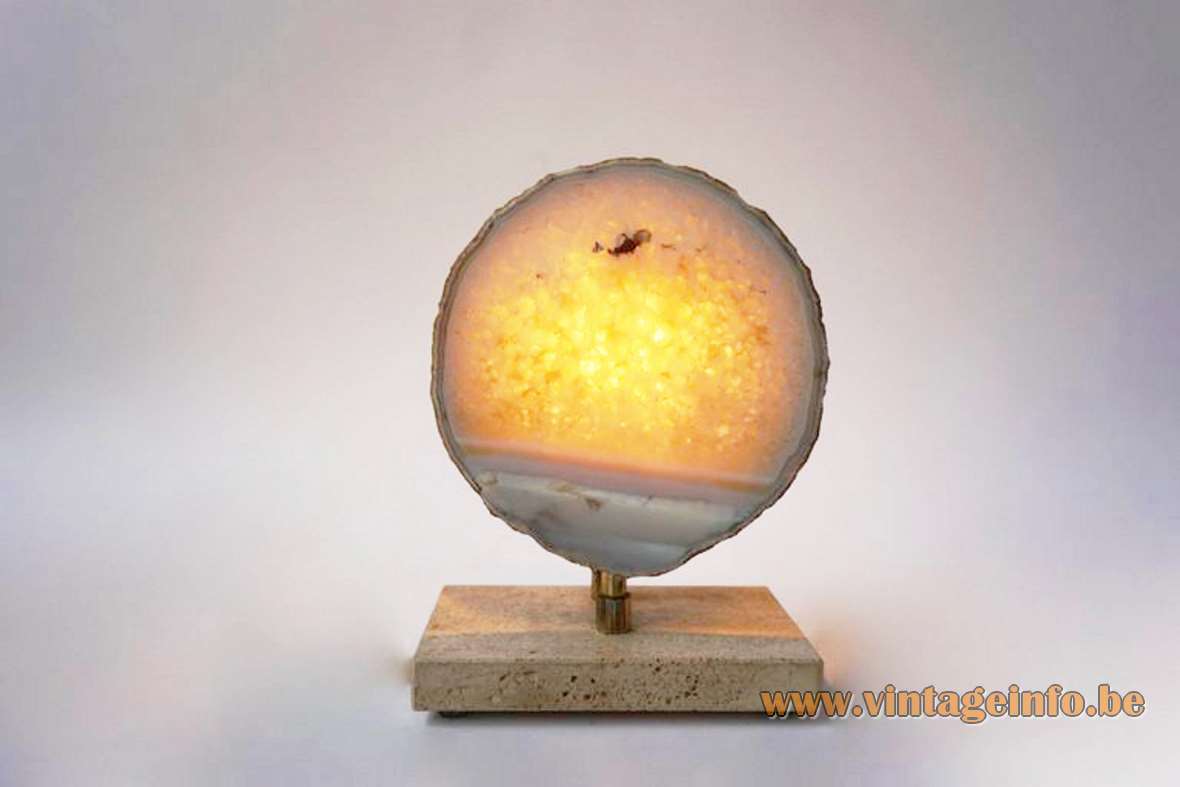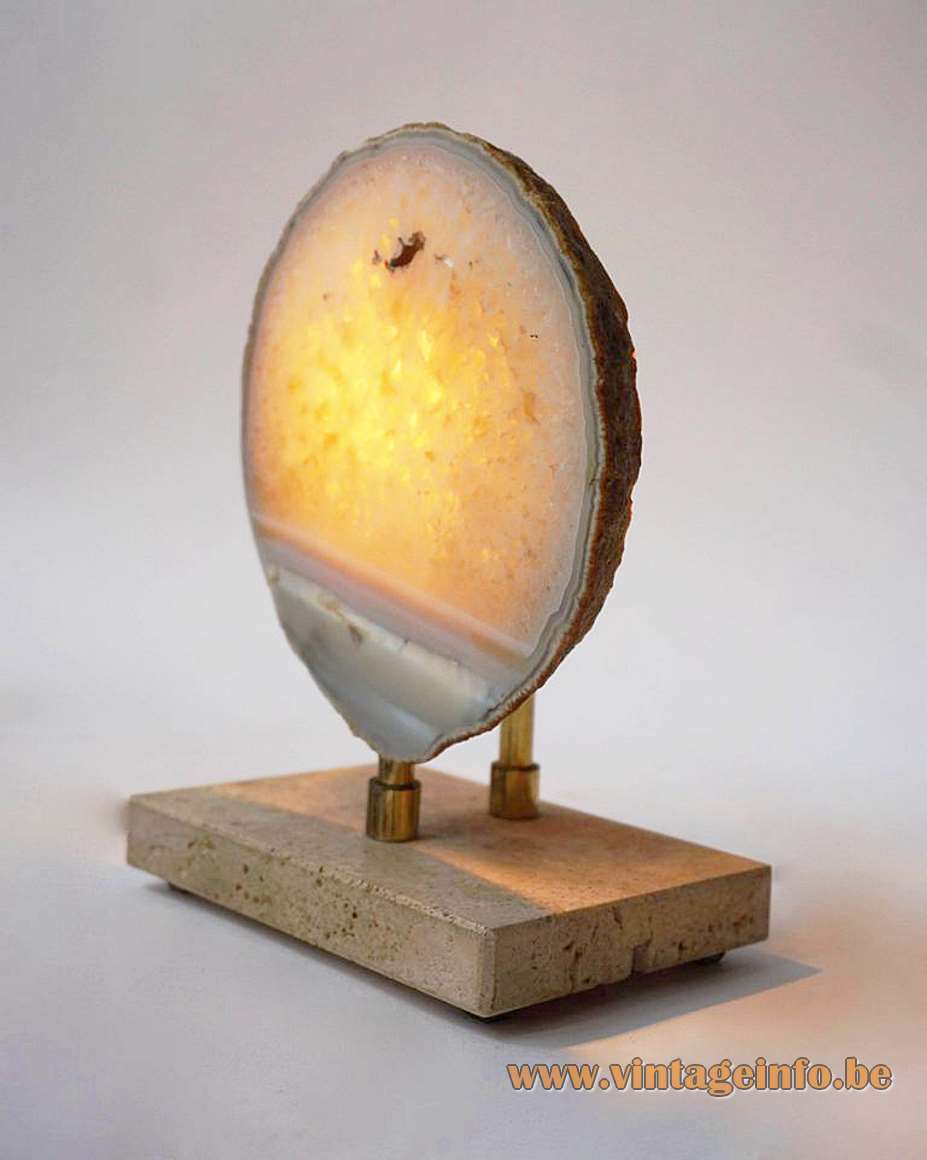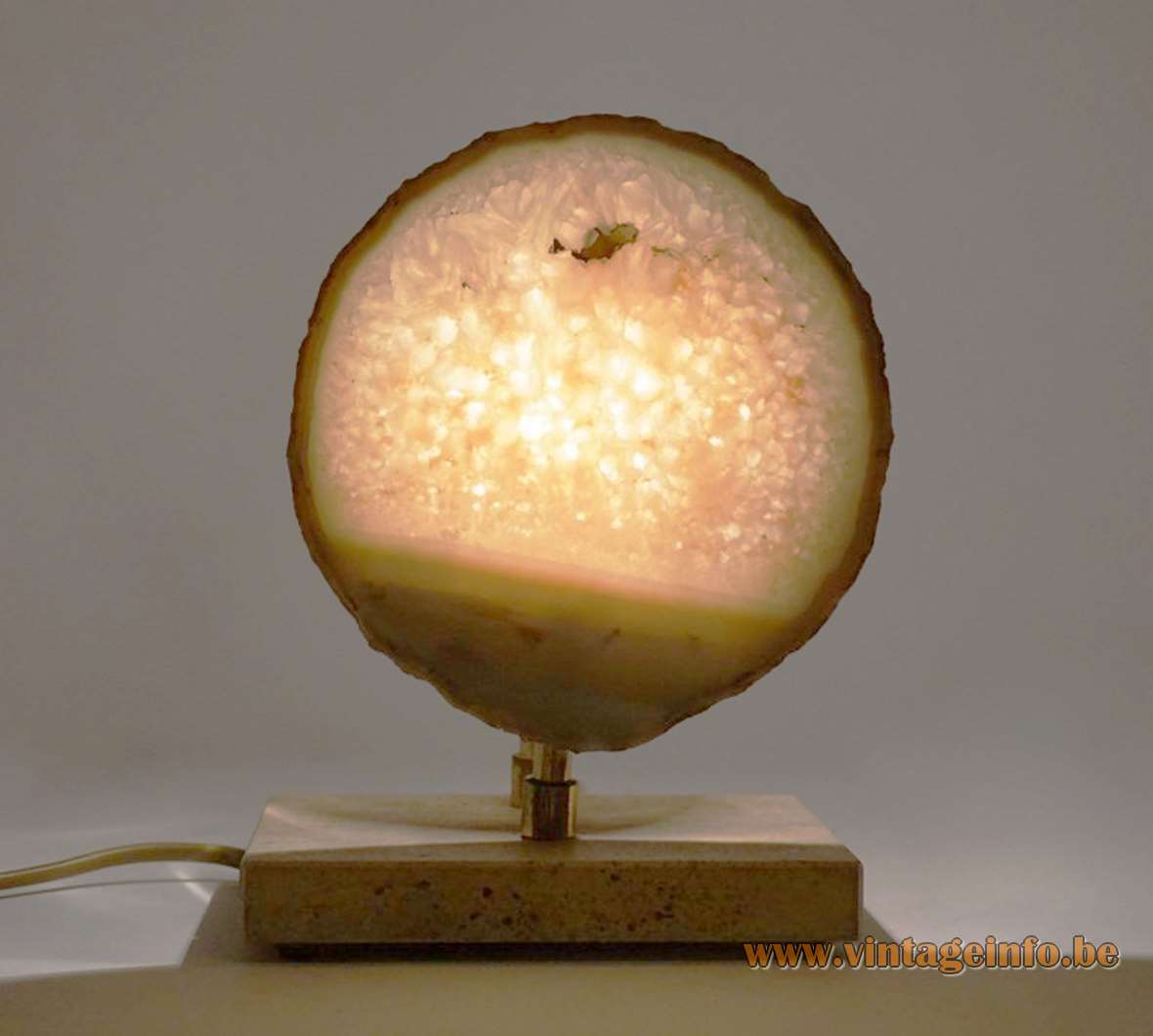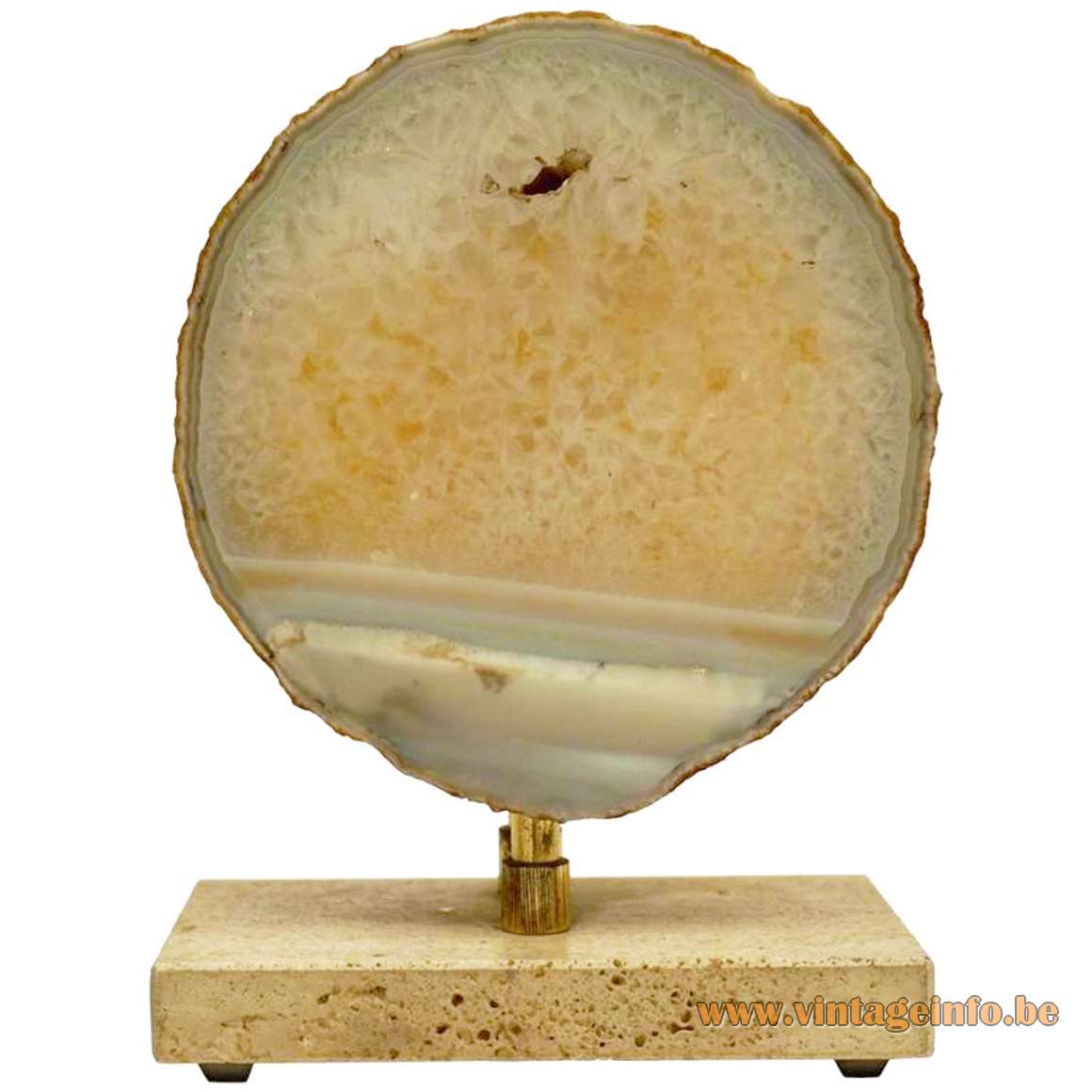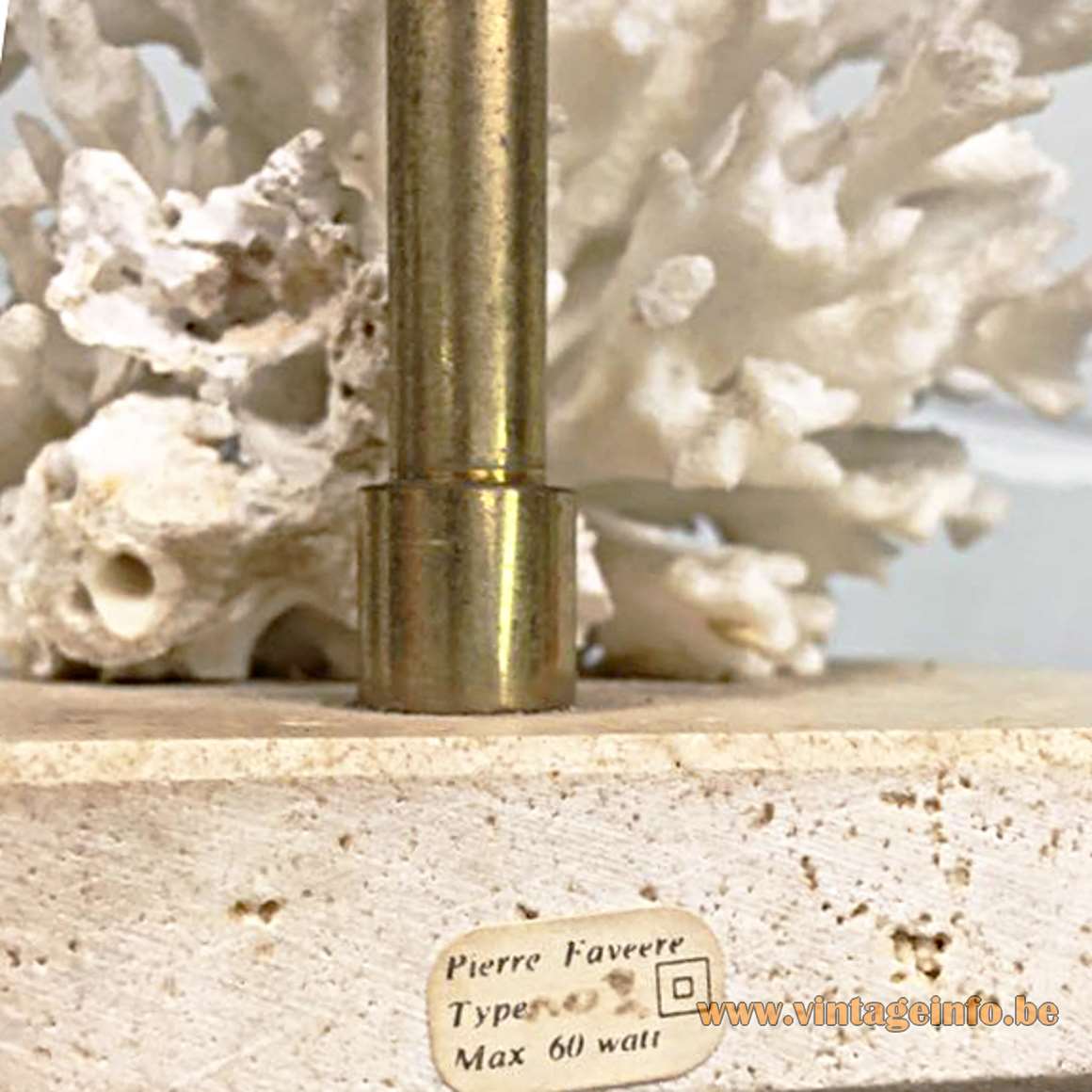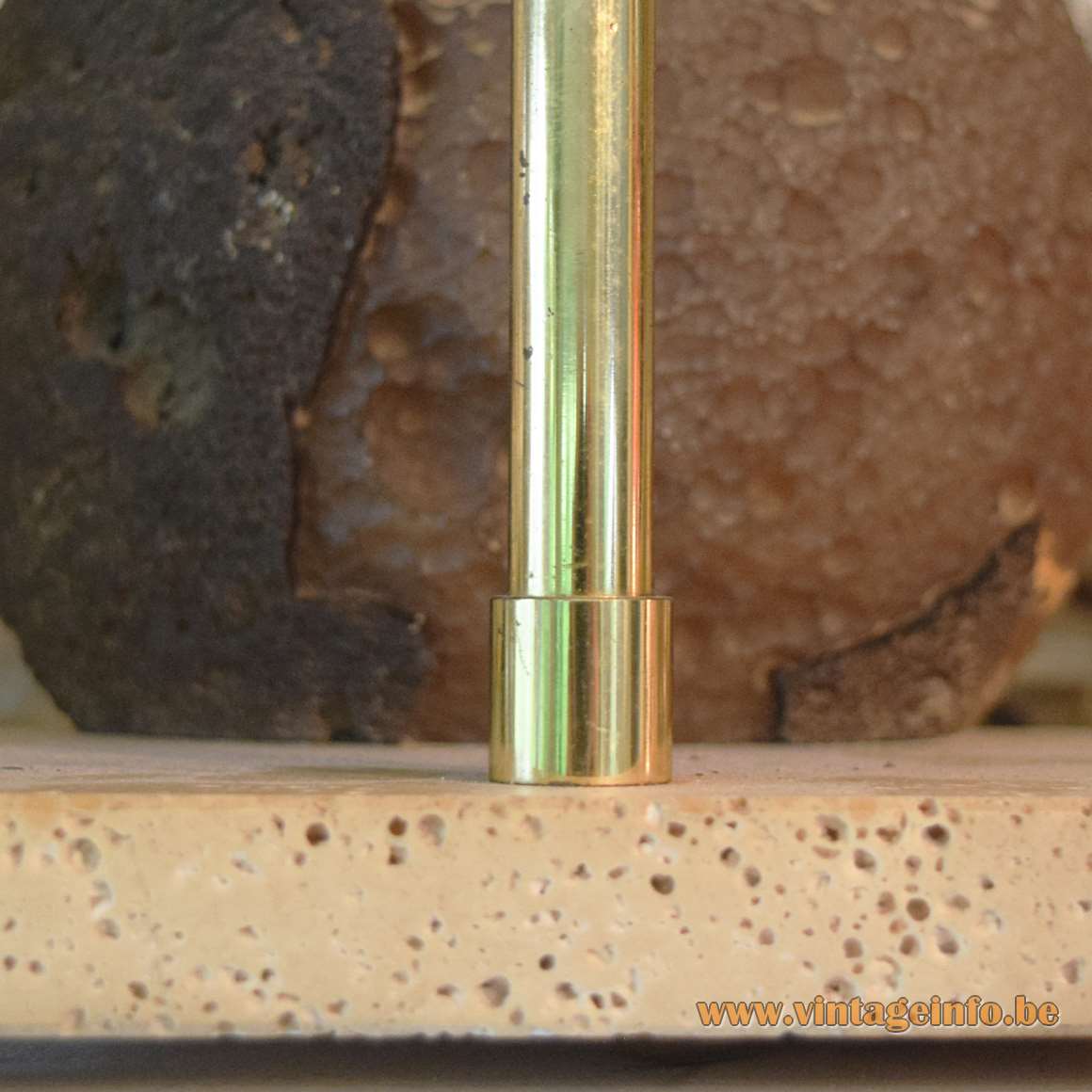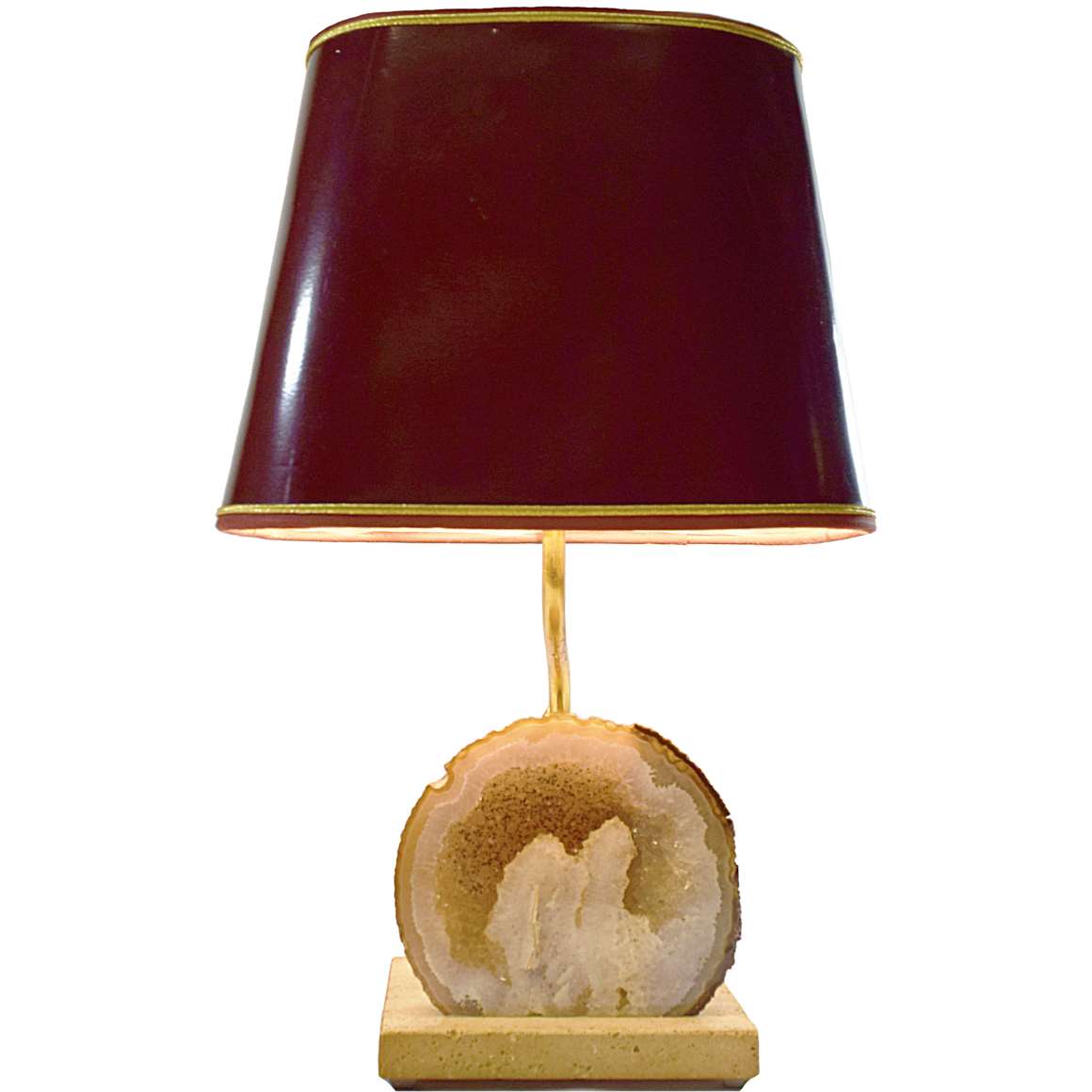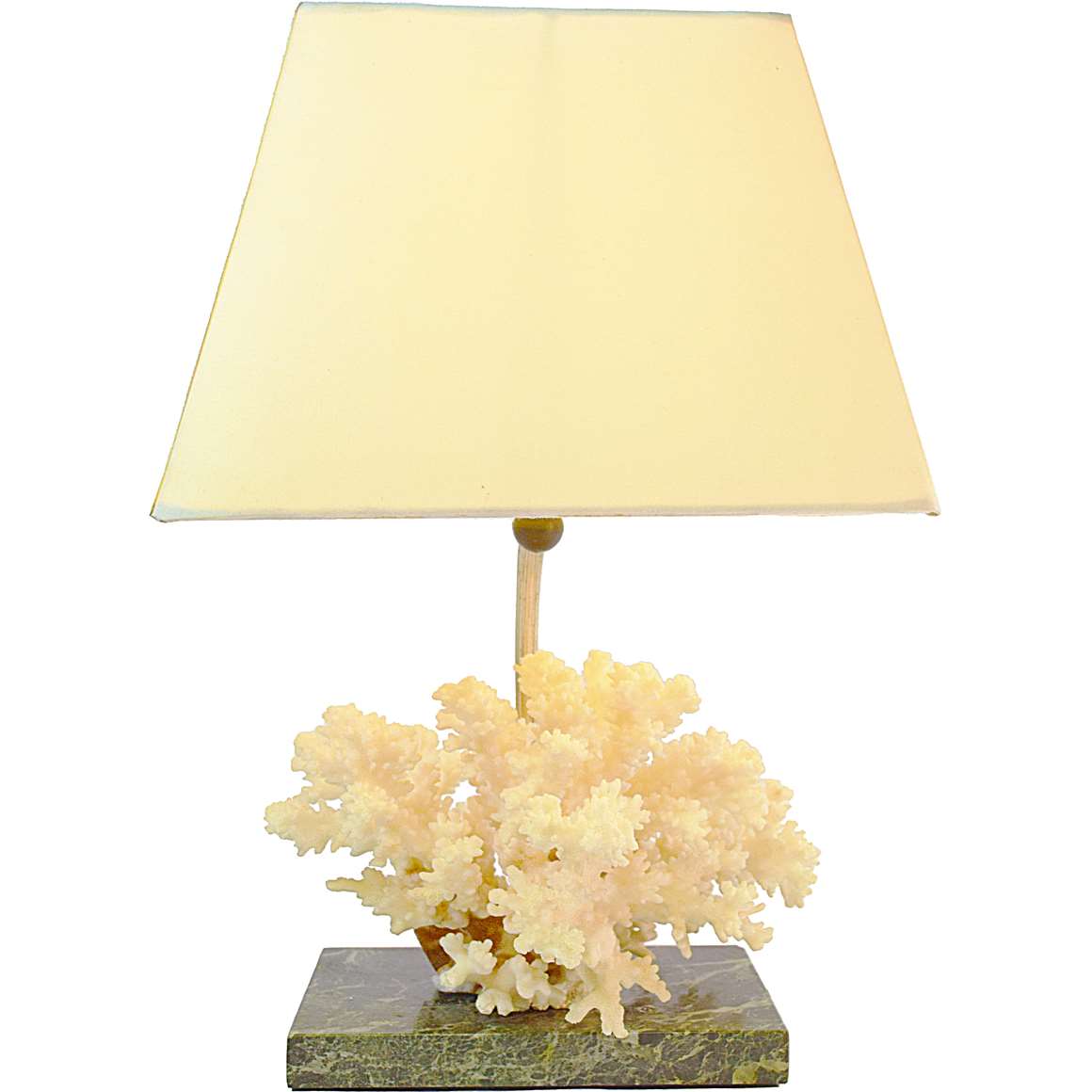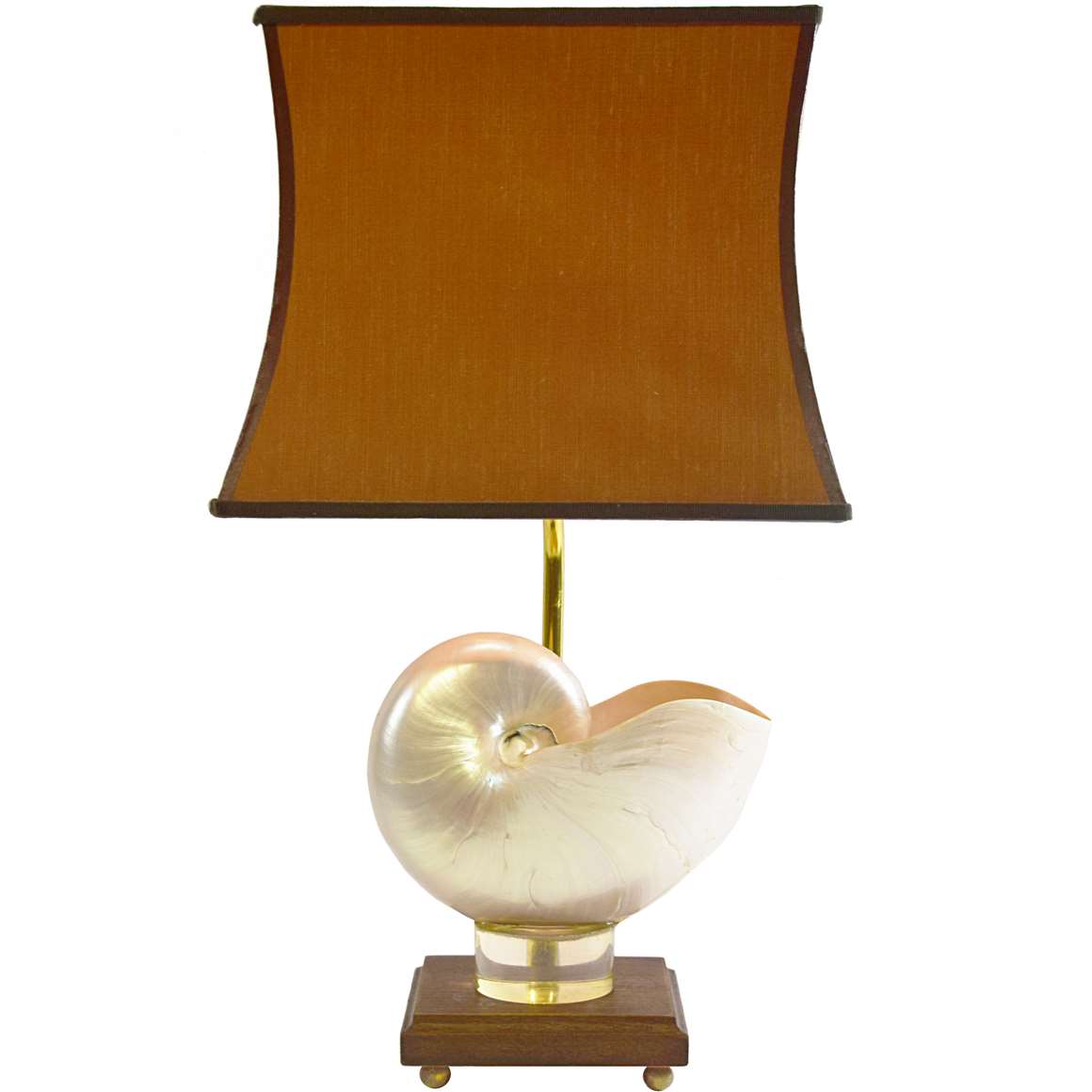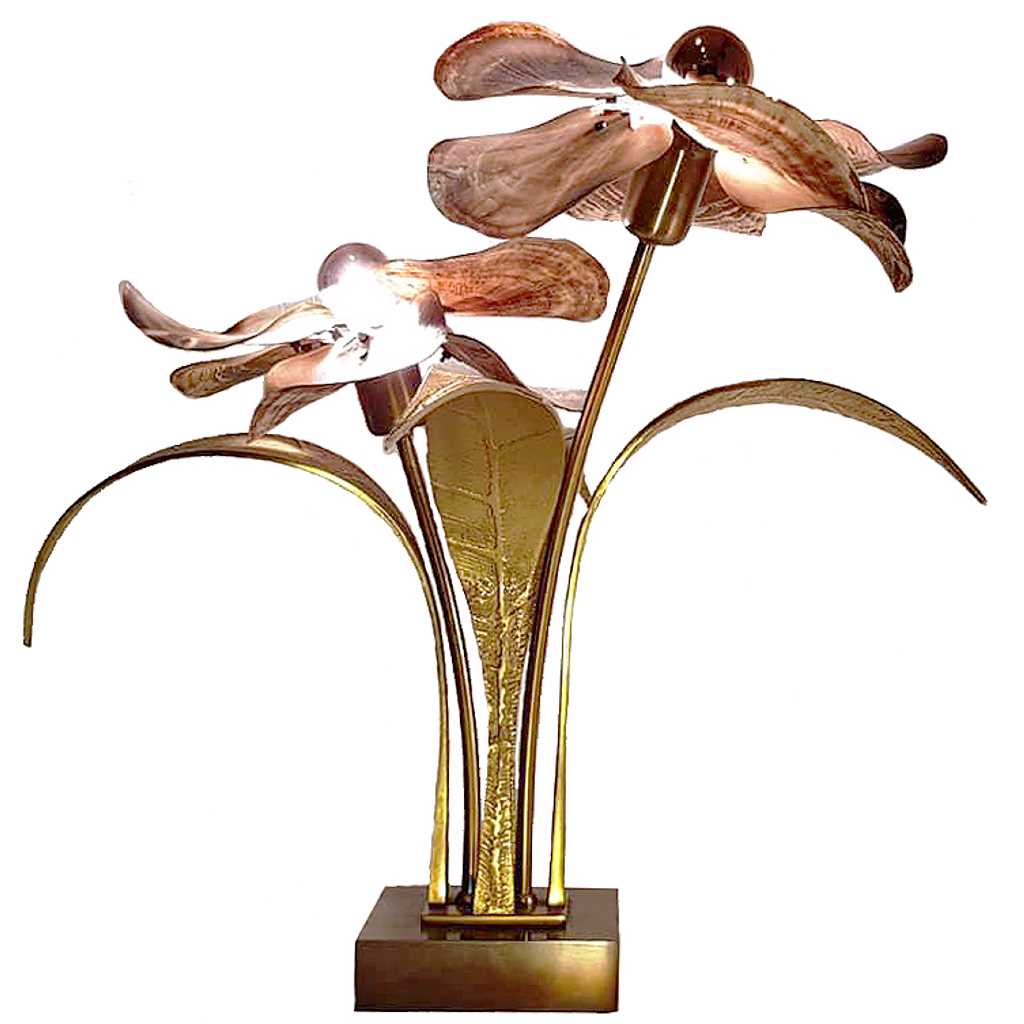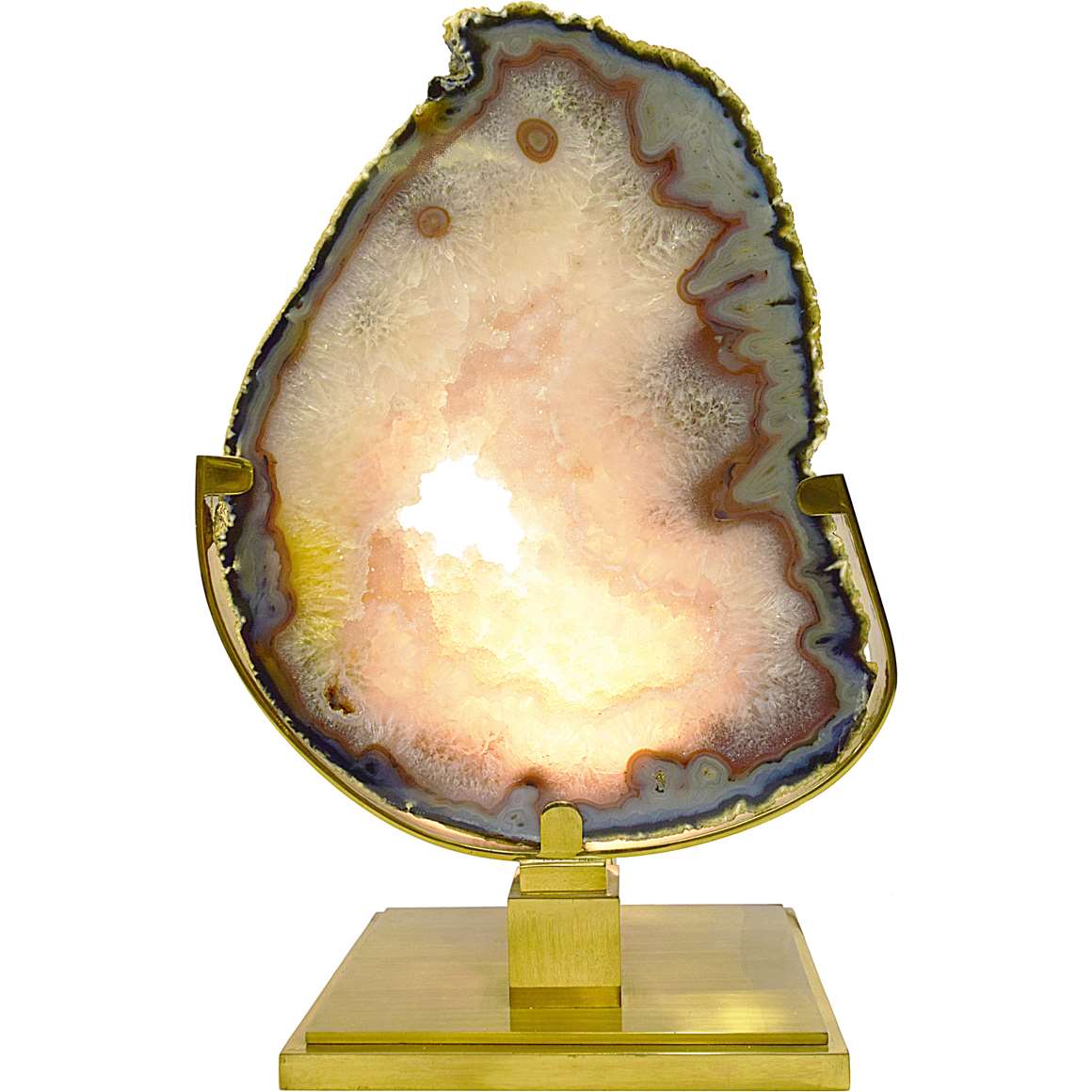Pierre Faveere Agate Table Lamp
Materials: Rectangular travertine, limestone base. Some brass parts and rod. Round slice lampshade, made of a densely grown agate geode, probably from the quarries around Idar-Oberstein in Germany. Yellow, white, grey stone disc. Bakelite E14 socket.
Height: 21 cm / 16.53”
Base: 16 x 10 cm / 5.90 x 5.11”
Electricity: 1bulb E27, 1 x 60 watt maximum, 110/220 volt.
Anytypeof light bulbcanbeused, not a specific one preferred, but a clear bulb always gives the most beautiful effect on minerals.
Period: 1970s.
Designer: Pierre Faveere.
Manufacturer: Pierre Faveere, Belgium or France.
Other versions: This Pierre Faveere agate table lamp exists in all kind of sizes and colours. Made with other minerals, corals, shells and so on. All with a travertine or marble base. None of these table lamps are the same. They are made by nature.
Pierre Faveere
This agate table lamp has no label, but it is made by Pierre Faveere. He used the same brass and travertine (limestone) parts as you can see on the left for other table lamps. No information can be found about him or his company, but the name Faveere exists only in France and Belgium (in Europe). In all probability it was a Belgian company. The Belgian Artifex company used the same travertine base for several lamps, also in this style, but in the 1980s. Probably it was the successor of Pierre Faveere.
Designers that worked with corals, fossils and minerals: Willy Daro, Jacques Duval Brasseur, Henri Fernandez, Maison Honoré (Richard Faure & Isabelle Faure), Lova Creation, Paul Moerenhout, Pierre Faveere, Mário J. Pires, Violette, Romeo Paris, Stan Usel, Isabelle Masson, Georges Mathias, and many others.
In the beginning of the 1970s almost every lamp-company produced lamps in this style. Often made in Italy, France and Belgium.
Willy Daro
These lamps are generally attributed to the famous Belgium artist Willy Daro, who was the owner and creator of Les Nouveaux Ateliers Willy Daro SPRL, in Brussels, Belgium.
These lamps became popular because at that time the collecting of minerals, gems, fossils, shells and corals boomed. In almost each city appeared a store that sold minerals, fossils and corals, and also due to Willy Daro who made these lamps famous.
Most of the agates used for these lamps originate from Brazil, but this one is different. Agate geodes like this can be found in the quarries around Idar-Oberstein in Germany.
Agates around Idar-Oberstein are found in the so called Rotliegend, in basalt flows from the Permian age. These flows produce many different types of agates.
Links (external links open in a new window)
Vintageinfo – Other agate lamps
Another Pierre Faveere agate lamp
Henri Fernandez agate table lamp
Lamps in the style
Many thanks to Frank from Flowermountain for the pictures.
